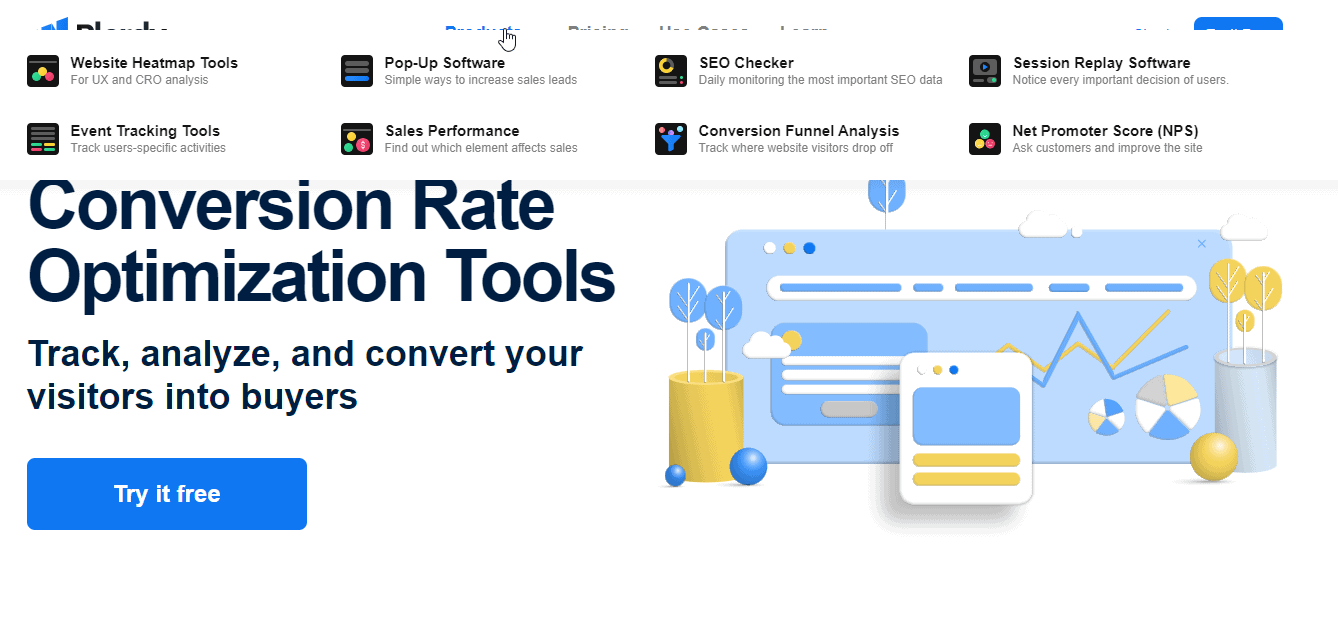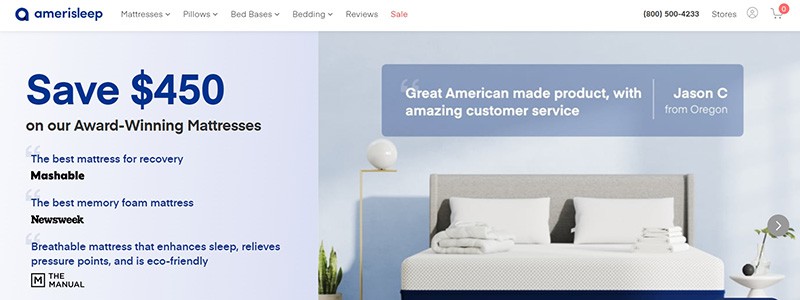Ecommerce optimization is becoming increasingly important in today’s digital age for businesses to stay competitive in an ever-changing marketplace. This ? article provides a comprehensive guide with 10 essential tips for optimizing an eCommerce website to help businesses succeed in this endeavor. These tips will help you get the most out of your eCommerce business, from understanding customer behavior (CX, UX) to optimizing product pages and checkout processes.
What is eCommerce Optimization?
Is your business related to the eCommerce industry? You will need to quickly improve the usability and SEO of the website for an online store. If you don’t optimize the online store, you run the risk of making it hard to use. If this happens, the user won’t finish the conversion optimization and will immediately leave the online store.
Optimizing an eCommerce website is how an online store ranks in the top posts of Google. The percentage of visitors entering the online store and performing the target action – micro or macro optimization – is an indicator of how optimized an online store is. Micro conversions include:
- Adding an item to the cart.
- Marking an item as a favorite.
- Email subscription.
- Using a promo code.
- Comparison of goods.
- Store search.
- View recent comments.
- Link to online store information.
- Call to the store, etc.
These actions should eventually lead the consumer to a macro conversion – making a purchase.
Depending on the type of commerce, stages may vary. In each case, a valuable KPI is determined for a definite eCommerce company.
Why is Ecommerce Website Optimization Important?

Optimizing your eCommerce website will improve usability (use Plerdy Heatmap, Session replay and eCommerce tracking) and therefore increase your sales. You can see what an unoptimized, user-unfriendly website looks like with Plerdy’s UX game.
For high conversion, information on the online store for eCommerce must be as detailed as possible. Adding and optimizing descriptions, clarifying product specifications, transparent prices, and logistics conditions can significantly affect conversion optimization. In addition, the quality of photos and the presence of video reviews, customer reviews, and reviews will give the eCommerce online store an additional chance of success.
Ecommerce Website Optimization Tips
When it comes to eCommerce, a customer’s decision to buy is affected by things like product descriptions, eCommerce online store colors, product placement, and where the “buy now” or “call-to-action” button is. So let’s look more closely at a few places where we can improve.
Build Customer Trust to Increase Ecommerce Conversions

Ecommerce is a highly competitive industry, so you need to build trust with your customers. Studies show that people buy products from reputable sellers because they trust their names. To increase clients confidence, follow these 10 tips:
- Get an SSL certificate for cyber security.
- Strive only for positive reviews on your online store.
- Offer convenient shipping.
- Stay accessible to your customers.
- Show vulnerability to your potential buyers.
- Adjust strategic internet marketing.
- Create a form for users to leave their feedback and recommendations.
- Work on design of your online store.
- Provide social media links.
- Build trust with people with an About Us page.
- Perhaps they have wishes. Show that their opinion is substantial to you in order to improve your brand.
Perhaps they have wishes. Show that their opinion is substantial to you in order to improve your brand.
Optimize Your Ecommerce Online Store Search

You might not know, but almost 72% of eCommerce websites fall short of search engine expectations. But you most likely want to enter the 28% of the eCommerce market and are ready to apply optimization tools and various promotion methods. Here are some valuable tips for this:
- Your products should rank according to the user’s query.
- Avoid null search results because people will leave such an online store.
- Include user reviews as search filters.
- Filtering variants are essential (by category: price, brand, size, color, etc.)
- Your online store must have social proof.
- Set sort options (for example, lowest price first, then highest price).
Experts also offer to avoid null search results because people will leave such an online store.
Create a Captivating Call to Action

You need a link or button to prompt the user to take action. The essence of this is to lead the customer to purchase a product. It can be “contact us,” “fill out the form,” “get a discount,” “share on social networks,” “get a call,” and so on. It is important to consider main 3 optimization tips:
- A mobile call to action is best done in full screen.
- Use proven calls to action.
- The button should be at eye level; the user does not need to scroll the page.
The button may not be bright and flashy, but it should interest and motivate you to click.
Shopping Cart

The shopping cart is a critical page to set up to optimize your eCommerce website. When a user enters the online store, placing an order should be as easy as possible. Make sure that the visitor requirements to fill in the minimum number of fields without spending too much time and effort on it:
- First name and last name (sometimes as individual fields).
- E-mail (for automatic user registration).
- Phone number.
- The delivery technique of goods.
- Payment method.
- A section for order explanations.
Providing clear information about the purchase and delivery process will help reduce the number of abandoned carts. In addition, consider how the page appears on a mobile phone screen – in many niches, this device outnumbers desktop devices in terms of frequency of use.
Customers should see a field where they must enter a promotional code if one is to be used, which is common in eCommerce promotions.
Content Optimization

Often, the main barrier to deal with is the content on the eCommerce online store and its presentation style. Optimize it! Consider how logical and potential customers perceive understandable information when describing products.
When creating content for eCommerce online stores, try to “close” as many potential misunderstandings and customer objections as possible. As a result, you will help to shorten the time between learning about the product and making a purchase. You should also optimize your content based on keywords to increase organic traffic and conversion:
- For categories.
- For blog articles.
It is vital to structure h1, h2, and LSI properly with long-tail keywords.
Home Page Ecommerce Website

To improve the effectiveness of your eCommerce online store home page, analyze how the design, content, buttons, and other optimization units give the visitor a comprehensive understanding of where to go and what to do.
For example, the main page has the highest banners and promotional offers concentration. You need to check how these elements look on a mobile device, whether the call to action and the main message are visible.
Do not overload the page with unnecessary graphics, pictures, or interactive elements. For optimization of the first page, be sure to place the search bar on both the main and all other pages to make it easier for a potential client to find the necessary information or products.
Before optimization, you also need to analyze the scroll depth and click map — users who come from different traffic channels may behave otherwise. For instance:
- Someone presses forthwith on the search.
- Someone is heading for the menu.
- Someone click on a banner or other components.
Therefore, it is important to examine data for all customer groups for nice conversion optimization.
Ecommerce Landing Pages

Landing pages are used as landing pages where a client clicks on a link in aimed advertising. Start the conversion optimization process with them (basically, this is a category or subcategory of an online store). The most prosperous pages in the online store for setting up advertising are as follows:
- Brand Specials (e.g., “Nike Women’s White Sneakers”).
- Goods by purpose (for example, “Slicers for the kitchen”).
- Category filters (for example, “New Balance Men’s Blue Sneakers”).
- Pages dedicated to a concrete product (for example, the Samsung Galaxy S21 FE 5G product card ).
Next, check the sequence of optimization steps of your potential client so that everything is simple in the conversion path and the user can see where to click to enable filters, where the “Add to Cart” button is located, etc. It is also important that the choice of products is optimized and streamlined, filters are configured, all product photos are of high quality.
Install tracking and analytics tools to the eCommerce website

Installing trackers and analytics tools will allow you to identify which part of the eCommerce online store the main activity of visitors are concentrated on and which areas of the page are ineffective in terms of conversion and require optimization. For basic needs, Plerdy and Google Analytics will do.
Use Plerdy heatmaps to study customer behavior on the eCommerce online store. This will help you understand where the interest of visitors is concentrated. Move different elements of your eCommerce online store to different places and analyze how customer behavior changes. Optimize the website.
Marketa V appreciated Plerdy’s capabilities when she scanned the entire eCommerce online store and instantly received a detailed SEO report. She also likes that the platform regularly updates its features.
Enhance your eCommerce online store’s UX/UI

An inconvenient interface can confuse potential customers and drive regular customers away from your online store. More than 30% of customers willingly use the search bar and filters to find the necessary goods and services. Make sure your eCommerce online store is user-friendly.
Examine how your eCommerce online store appears on mobile devices. Using Plerdy Sales Performance, optimize all interface elements to determine which elements increase sales. By clicking on the icon, the user should be able to quickly find the information they require.
Check the effectiveness of each interface element before optimizing. Plerdy provides a detailed checklist for evaluating the usability of the eCommerce website as a whole and each of its components. The list includes 210 items divided into functional categories based on customer actions on the website. Product segmentation, purchase, feedback, design, content, shopping cart, backlinks, product information, registration process, sale, eCommerce online store construction, call to action, technical nuances, and search options are all necessary optimization recommendations. Examine each component and optimize the “weak” areas.

Personalize Sales Process
A personalized approach to the client involves the following actions for conversion optimization.
- Segment your target audience. Divide customers into groups according to various characteristics (gender, location, age, traffic sources, shopping list, etc.). Then, suggest what would be preferable for each group, using dynamic text fields.
- Add a Wish List option. This will increase the likelihood that the client will return next time and make a purchase that they did not make when using the eCommerce online store.
- Set up advertising campaigns. Build communication with users separately for each goal audience. Test different advertising mottos.
These tips to optimize the sales process and for better conversion will allow you to track the public’s interests and offer additional services according to customer preferences.
Best 5 Ecommerce Website Optimization Case Study
If you are looking for tips to increase conversion, study real case studies of companies regarding various aspects of optimizing an eCommerce online store.
Budapester

Budapester is a German luxury fashion retailer. However, the company was faced with a too low conversion rate with an active influx of audience to the eCommerce online store, especially on mobile gadgets.
When optimizing, marketers went by more clearly, informing customers about the unique selling proposition. It was decided to place product images in a more conspicuous place, adding information about free shipping. We reduced the store logo and changed the title to free up space.
We also updated the appearance of the eCommerce shopping cart – it made it more convenient for making a transaction. The optimization actions combined resulted in a 12% increase in total conversions and a 30% increase in mobile conversion rates.
Edible

Edible Arrangements collects and delivers fruit and flower baskets, holiday bouquets, flower arrangements, and gifts. Performing a simple optimization action allowed the company to increase its daily conversion rate by 8%.
Edible has the option of same-day delivery of the order. However, this information was not obvious to eCommerce online store visitors. Therefore, it was decided to place a large banner with an offer in a prominent place on the main page for conversion optimization. In addition, the addition of an interactive element in the form of a countdown timer removed all questions from customers regarding the understanding of the service.
Amerisleep

Amerisleep’s website has seen a decrease in conversion rate – while optimizing it; marketers went through a detailed explanation of the product’s value. The foregoing slogan, “Mattresses provide comfortable sleep,” was interpreted: “You never want to go back to a night spent in poor quality sleep.”
The company has advantageously changed the delivery of value compared to its eCommerce competitors. For example, a message appeared on the online store about a concrete patented technology for manufacturing goods instead of general, trivial phrases about convenience. Together with the online store mentioned above, optimization actions increased the conversion rate by 14%.
Gwynnie Bee

Gwynnie Bee sells and rents clothing items online. As part of an overall eCommerce marketing strategy, the company increased brand awareness and audience loyalty by optimizing content and attracting influencers.
Media people with similar values and the audience they influence were found to do this. The content was established and posted on the YouTube channel, GB social platforms, and the trendsetters’ websites. These optimization efforts benefited both parties, capturing consumer demand and boosting the eCommerce online store’s conversion rate by 6%.
Kettlebell Kings

The founders of fitness equipment startup Kettlebell Kings realized that the results of the previously chosen promotion tactics through Google Ads did not match the costs. And they turned to a more organic approach – they continued promotion through social networks, particularly Instagram.
The company has produced training eCommerce content that explains how to use sports appliances to increase training effectiveness. Over time, it turned out that customers create their content using the company’s products and post it in their accounts. Marketers have developed a set of criteria that social messages must meet to be used. As a result, the popularity of the brand has increased.
Conclusion
Simple actions and minor improvements in eCommerce online store navigation, element layout, or information presentation can frequently increase conversions by several times. As a result, optimizing an eCommerce website conversion should be done on a regular basis, with each iteration tracking and correcting positive and negative changes.

Instead of this, try conversion signal mapping. This term was coined by Ton Wesseling, and it’s basically a way to identify the highest impact areas of the website to optimize. You A/B test removing elements entirely – for example, instead of testing different images in an image slider, you remove it. Then, you see what the impact is. What you’re looking for is a large change, negative or positive. This means the real estate this element occupies is important and should be prioritized in your roadmap.